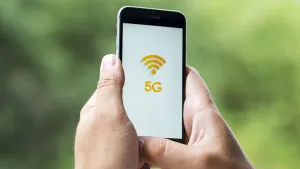
Operators navigate telco reconfiguration tide
The rise of FTTP access networks pushes a majority of operators toward a single converged network strategy.
Often overlooked by many, passive asset configuration now emerges as a pivotal component in the telecommunications industry. According to a report by the consulting firm Arthur D. Little, pressures from rising interest rates, the quickening pace of fibre-to-the-premises (FTTP) deployment, and an increasing need for differentiation are urging integrated telcos to recalibrate their asset structures.
This imperative for reconfiguration, stemming from a desire to optimise network economics and adapt to changing market dynamics, presents both challenges and opportunities for industry players, as they strive to remain competitive and relevant.
Central to this reconfiguration is the value of future Infrastructure Companies (InfraCos), which hinges on optimising network economics and wholesale business, emphasising FTTP network share and utilisation.
Anticipated issues
Amidst expected consolidation, value creation depends on local market structures. Operator decisions during reconfiguration involve six key trade-offs: deciding between open or closed InfraCo networks (FTTP and legacy); opting for separate InfraCo and ComCo entities or a unified approach; choosing FiberCo over NetCo; tailoring wholesale portfolios to specific tenants or a broader audience; aligning or adjusting the InfraCo-ComCo demarcation based on product portfolios; and either embracing FTTP or taking a defensive stance.
As the industry evolves, various driving forces have rapidly accelerated telco asset reconfiguration. A shift in valuation has been observed, with infrastructure assets garnering higher valuations, attracting new investors to the telco value chain.
Concurrently, telcos have grappled with increasing pressures on their CAPEX-to-sales ratios, which in turn has led to the exploration of innovative funding structures. This period has also highlighted the contrasting business models between InfraCos and ComCos, creating internal tensions that underscore the need for better alignment. Additionally, emerging players in the industry have pursued lucrative anchor tenancy deals, viewing them as key strategies to amplify their market expansion.
Integrated telecom companies, the stalwarts of communication infrastructure, have long operated with diverse layers, each governed by distinct business models and capabilities.
These unique layers include passive infrastructure, active infrastructure and orchestration, network operation, and the commercial facet – each with its specific investment horizons, risk profiles, and business models, creating a dynamic ecosystem.
“Integrated telco assets are being reconfigured to lift the constraints across these layers, unlocking the full business model potential of each layer,” the report said.
This evolution has birthed new entities, notably Passive InfraCos and Commercial Companies (ComCos).
InfraCos encompass passive infrastructure such as towers, fibre networks, and data centres. ComCos incorporates active infrastructure, network orchestration, operations, and the commercial dimension.
This restructuring facilitates the harmonisation of layers that were once compartmentalised, offering renewed vigour to their business models.
“The question at the core of asset reconfiguration is whether a specific asset class creates more value through differentiation (via exclusive access) or mutualization (via economies of scale),” it said.
The roots of asset reconfiguration took hold in the 1990s, as passive infrastructure ceased to be a distinguishing factor in mature markets with overlapping coverage.
This shift prompted telecom operators to relinquish ownership of mobile sites, a trend exemplified by TowerCo investments that now govern over 50% of European mobile sites.
Fixed assets also faced this transformative wave as copper and hybrid fibre-coaxial technologies underwent competition.
However, the turn of the decade saw fixed asset reconfiguration gaining significance.
The shift towards full fiberisation of access networks, reducing the potency of technology differentiation, expedited this process.
Stakeholder dynamics
Integral to the motivation for asset reconfiguration is alleviating pressure from disparate stakeholders.
The aspirations of customers and markets for technological advancements, shareholders’ thirst for dividends, and investors’ expectations for value necessitate focused entities that resonate with corresponding stakeholder demands.
“Splitting an integrated telco into an InfraCo and ComCo removes the typical 15%-20% CAPEX-to-sales ratio imposed by shareholders and investors on the integrated telco and enables each entity to invest in the areas its underlying business model calls for,” the report said.
InfraCos boast lower risk profiles due to their replicability, lifetime value, and open-access nature, fostering higher valuations. In contrast, ComCos assumes higher risk profiles that correlate with their business dynamics.
Despite these changes, asset reconfiguration bestows strategic freedom, allowing entities to wholly embrace their respective business models.
For instance, when passive networks cease contributing to differentiation, InfraCos adopting open access models seek maximal network utilisation.
On the other hand, a consolidated context limits such an endeavour due to the reluctance to host competitors.
Beyond financial implications, reconfiguration enhances value by decoupling entities from conflicting strategic mandates.
Notably, the economic landscape of FTTP access networks is intricate, steering markets toward convergence around a single FTTP network.
This convergence hinges on factors such as market structure, the presence of competing networks, and the level of convergence between fixed and mobile services. A pivotal determinant is the distribution of value among competing players, necessitating judicious regulation.
As consolidation looms on the horizon, operators are propelled to anticipate their long-term trajectory. The reconfiguration journey, transformative and impactful, demands attention to key success factors.
Stakeholder involvement from the outset, alignment on strategic intent, patience in the process, and a nuanced approach to benchmarks foster smoother transitions.
Despite the complexities, successful asset reconfiguration unfurls opportunities to unlock substantial value, shaping the telecom industry's future landscape.
Likewise, amidst the dynamic landscape, it underscores the urgency of asset reconfiguration to avoid being outpaced.
“ADL expects financial players to partially or fully own more than 50% of expected FTTP premises in key European markets by 2027,” they stated.














